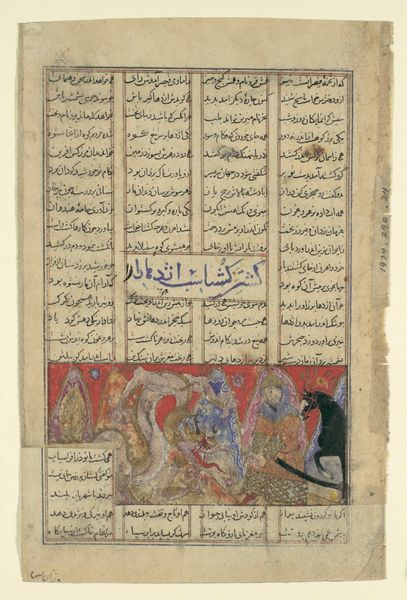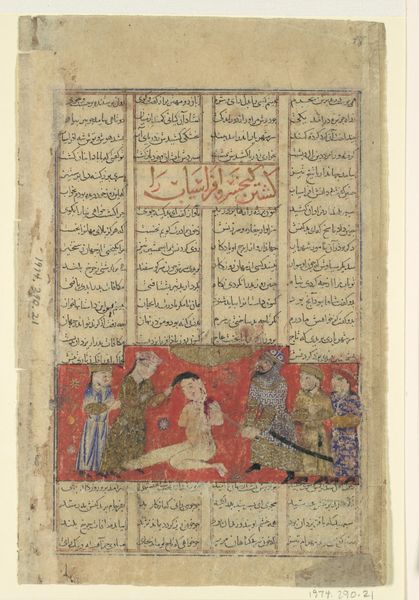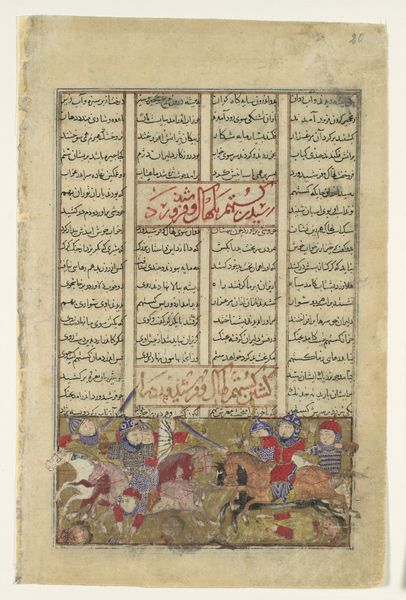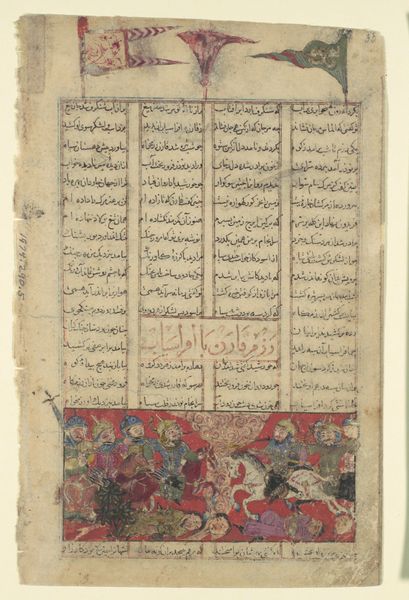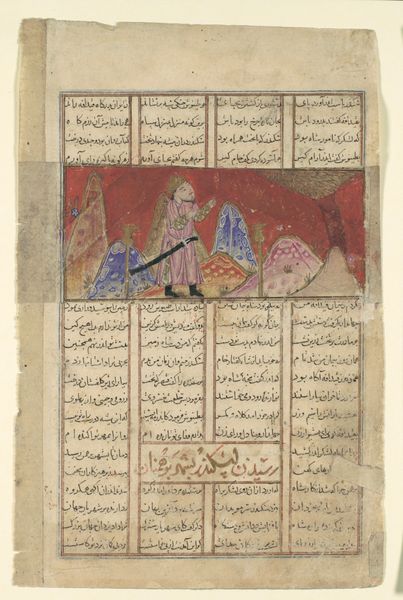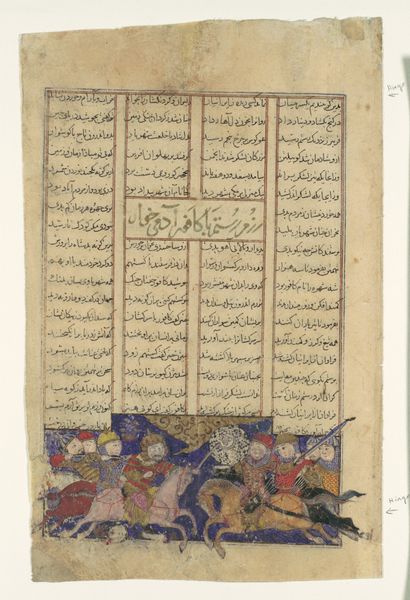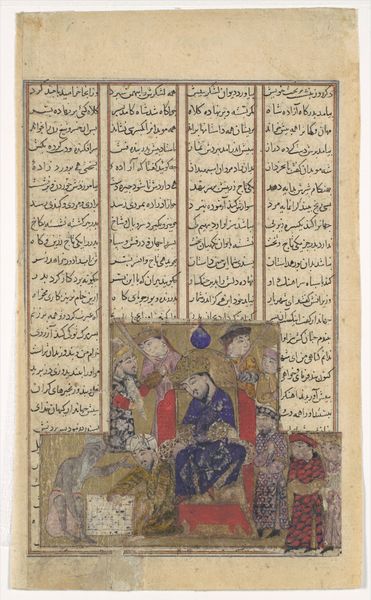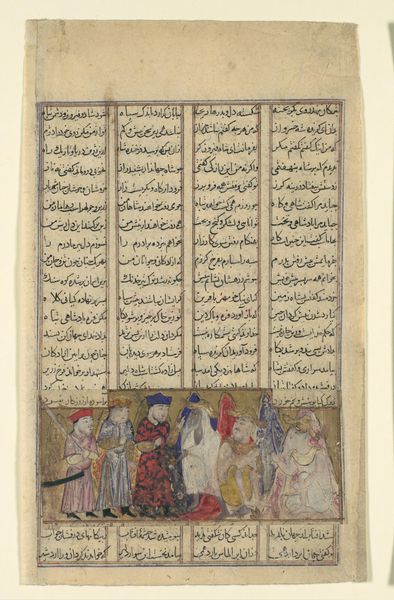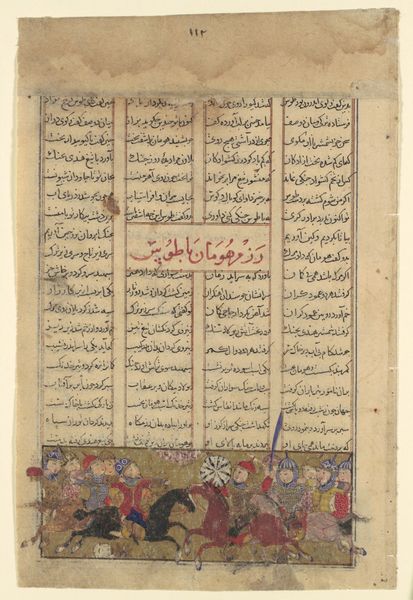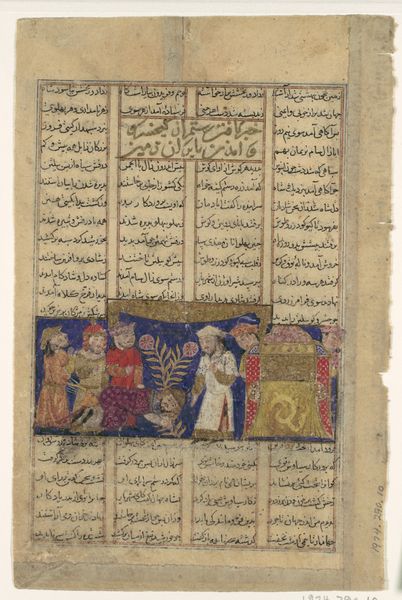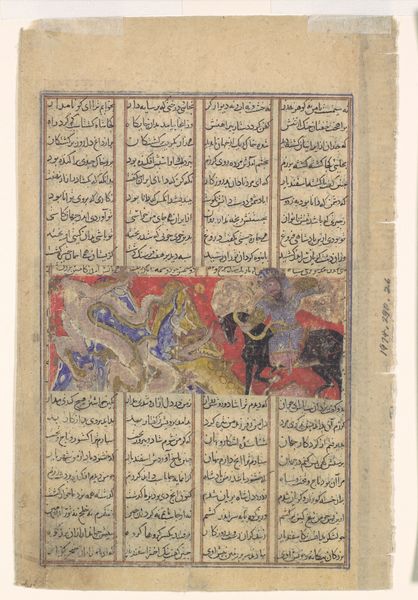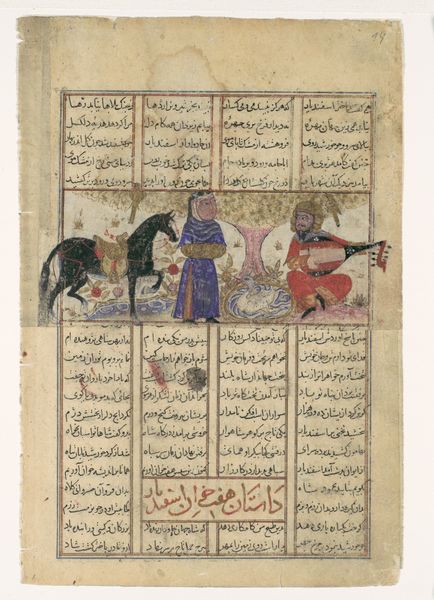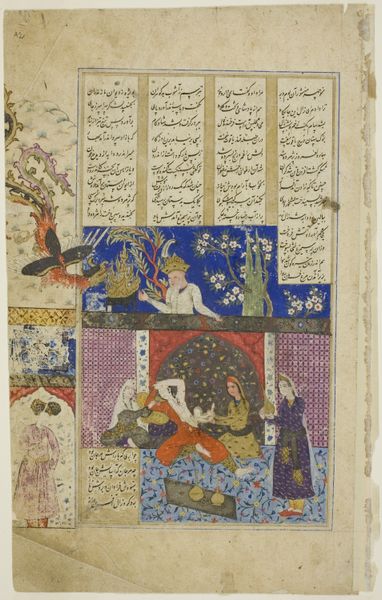
"Rustam Falls in the Spear-Lined Pit", Folio from a Shahnama (Book of Kings) 1305 - 1365
0:00
0:00
painting, watercolor
#
medieval
#
water colours
#
narrative-art
#
animal
#
painting
#
figuration
#
watercolor
#
coloured pencil
#
men
#
islamic-art
#
miniature
Dimensions: Page: H. 8 in. (20.3 cm) W. 5 3/16 in. (13.2 cm) Painting: H. 1 7/8 in. (4.8 cm) W. 4 1/4 in. (10.8 cm)
Copyright: Public Domain
Curator: So glad we could meet here at the Met to discuss this arresting page, or folio, as it’s called, from a Shahnama, or Book of Kings. The artwork’s title is "Rustam Falls in the Spear-Lined Pit", it's rendered in opaque watercolor and ink, and dates back to sometime between 1305 and 1365. What are your initial thoughts, from an iconographic perspective? Editor: The sense of impending doom is so palpable. The miniature format strangely amplifies the intensity, making me lean in, feel almost complicit in Rustam’s inevitable fall. The colors, too, are interesting – a juxtaposition of vibrant reds and yellows with these earthy, muted tones surrounding the pit, as if nature itself is mourning the hero’s fate. Curator: Exactly! The visual symbolism is masterfully layered, isn’t it? Red, of course, representing courage but here tinged with the violence about to unfold. You can't help but follow the narrative. Editor: I noticed the figures perched atop the 'trees' surrounding the pit – they are barely present, almost like afterthoughts and serve as symbols for divine judgment or perhaps destiny. Then there's the pit itself, almost vaginal, so representing new beginnings and ends and perhaps hinting at themes of betrayal and deception. Curator: It does invite speculation. The artist captures not only a moment of physical fall but also a profound psychological one, the hero confronting treachery. What's interesting here is the blending of Persian aesthetic traditions with influences from other cultures, visible in the stylized landscapes and figures. Do you get that? Editor: Oh, absolutely. The composite perspective is telling—that bird's-eye view combined with the close-up depiction of the figures contributes to a flattening effect, heightening the overall sense of drama. We are at once detached observers and deeply implicated participants in this tragedy. And again, this ties back to ideas on pre-destination as a function of storytelling as it appears in Islamic visual arts. Curator: It is true! To add, the border text surrounding the image isn't just ornamental. It contains verses from the epic poem, amplifying the narrative and lending a literary weight to the visual elements. Editor: Considering how these illuminated manuscripts were designed for elite circles, imagine how the visuals would intertwine with the performed recitation of the verses. "Rustam Falls into the Spear-Lined Pit" transcends being a mere illustration; it transforms into an immersive experience, deepening its lasting cultural resonance. Curator: An immersive, centuries-old tableau of a hero’s tragic destiny, beautifully crystallized on a single folio. I agree! Editor: And a powerful reminder, I think, of the enduring allure of visual storytelling, transcending temporal and cultural boundaries.
Comments
No comments
Be the first to comment and join the conversation on the ultimate creative platform.
